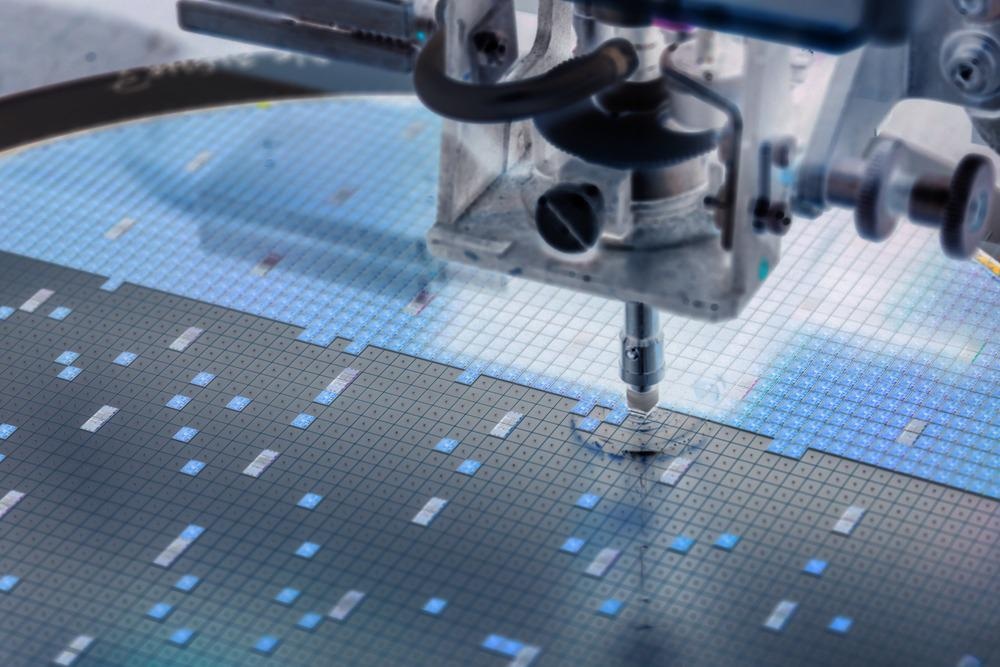In a recent study published in the journal ACS Materials Letters, for the first time, researchers analyzed atropisomerism in 1,4,5,8-naphthalene tetracarboxylic diimides (NDIs) and 3,4:9,10-perylene tetracarboxylic diimides (PDIs) for application in thermally responsive organic semiconductors.

Study: Atropisomeric Conjugated Diimides: A Class of Thermally Responsive Organic Semiconductors. Image Credit: Macro photo/Shutterstock.com
These diimides have two stable conjugated forms at room temperature, namely Syn-conformers and anti-conformers.
The Syn and Anti conformers are interconvertible in a heated solution, but in the solid-state, only the Syn conformers can be converted into Anti conformers via thermal annealing.
The researchers found that, for organic field-effect transistors (OFETs), conversion of Syn-NDI into Anti-NDI exhibited a 100-fold improvement in electron mobility, whereas, for the conversion of Syn-PDI to Anti-PDI, the recorded improvement in electron mobility was 5000-fold. Also, all Anti-conformer semiconductors had similar order and magnitude of electron mobility irrespective of the amount of thermal annealing.
What is Atropisomerism?
Atropisomerism is a stereochemical phenomenon resulting from steric hindrance that restricts rotation about a single chemical bond, most commonly a σ-bond between two sp2 hybridized atoms. Atropisomers compounds feature stereogenic axes due to the restriction of rotation around chemical bonds such as Caryl-Caryl and Caryl-N. Depending on the rotational conformation, atropisomers can be divided into two types, namely S-shape divergent antirotamers and C-shape convergent syn-rotamers.
Moreover, atropisomers based on conjugated aromatic diimide derivatives such as 1,2,4,5-benzene tetracarboxylic diimides (BDI), NDI, and PDI show restricted rotation of the Caryl-Nimide bonds imposed by the steric hindrance of ortho-alkyl substituents with the imide carbonyls.
The compounds with larger polarity and smaller retention factor (Rf) values are assigned as Syn-NDI and Syn-PDI, in which the long dodecyl ortho-alkyl substituents are on the same side NDI/PDI core. Meanwhile, the compounds with lesser polarity and larger Rf values are assigned as Anti-NDI and Anti-PDI, in which the long dodecyl ortho-alkyl substituents are oriented to different sides of the NDI/PDI core.
Characterization of NDI and PDI Conjugate Conformers
All NDI and PDI-based conjugate atropisomers showed good solubility in common organic solvents, such as dichloromethane and chloroform. Thermogravimetric analysis (TGA) showed 5% weight loss at 419 and 426 °C for Syn-NDI and Anti-NDI, respectively.
More from AZoM: An Overview of Atom Chip Technology
Differential scanning calorimetry (DSC) plots for second heating and cooling cycles showed almost identical peak values for both Syn-NDI and Anti-NDI, indicating the same phase transitions. The UV−vis absorption spectra of Syn-NDI and Anti-NDI in dilute dichloromethane solution and the thin film state were also identical.
In solution, the maximum absorption was at 580 nm, which red-shifted by 5nm for the thin films (solid-state). Furthermore, at 111°C and in a toluene solution, both Syn-NDI and Anti-NDI interconverted to each other at a fast rate. However, down at 80 °C, only Syn-NDI converted to Anti-NDI. The rotational energy barriers rates of pure Syn-NDI and Anti-NDI in toluene at 100 °C were 111.41 and 114.68 kJ/mol, respectively.
In contrast, the UV-vis absorption spectra of Syn-PDI and Anti-PDI showed differences in the thin film state with onset absorption wavelengths at 537 and 543 nm, respectively, indicating that there are obvious intermolecular interactions in the thin-film state. Additionally, the rotational energy barrier of both in toluene solution was similar at 100 °C. The conversion of Syn-PDI into Anti-PDI in a thin-film state was faster in the temperature range of 100−140 °C.
Effect of Thermal Annealing
The team fabricated bottom-gate top-contact (BGTC) OFETs with NDI- or PDI-based atropisomers as active layers and measured corresponding electron mobility at different annealing temperatures. The thin films of Syn-NDI showed average electron mobility on the order of 10−4 cm2.V−1. s−1, while for Anti-NDI it was at about 10−2 cm2. V−1.s−1.
After thermal annealing at 240 °C, the average electron mobility of Syn-NDI increased to 10−2 cm2. V−1.s−1, which was 100-fold higher than the value of the initial thin film. Similarly, when thin films of Syn-PDI were thermally annealed at 160 °C, the average electron mobility drastically increased from ~10−2 cm2.V−1. s−1 to 7.87 × 10−2 cm2.V−1.s−1.
Conclusions
To conclude, the researchers of the current study analyzed the application of atropisomerism behavior of NDIs and PDIs in a thermally responsive organic semiconductor. They found that the interconversion of NDI and PDI conjugates increased electron mobility by 10-fold and 5000-fold, respectively. The conjugate conversion was one-way in solid thin film state, but either-ways in solution state. Also, in contrast to NDI conjugates, PDI conjugates indicated intermolecular interactions in a thin-film state. This discovery can help develop multi-stimuli-responsive semiconductor devices.
Reference
Ge, C., Zhang, W., Tan, W., McNeill, C., Gao, X., Atropisomeric Conjugated Diimides: A Class of Thermally Responsive Organic Semiconductors, ACS Materials Letters, 2022, 4, 363-369. https://pubs.acs.org/doi/10.1021/acsmaterialslett.1c00722
Disclaimer: The views expressed here are those of the author expressed in their private capacity and do not necessarily represent the views of AZoM.com Limited T/A AZoNetwork the owner and operator of this website. This disclaimer forms part of the Terms and conditions of use of this website.